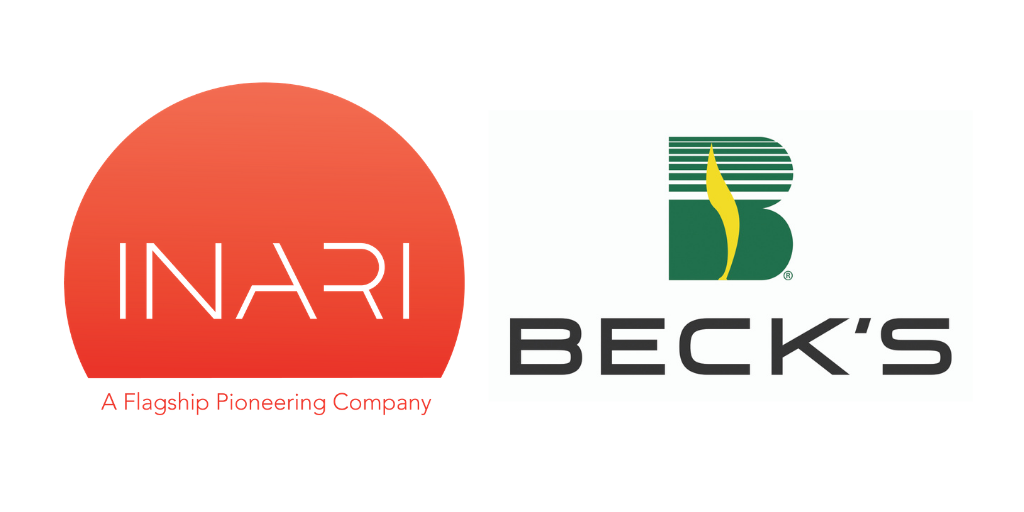Inari and Beck’s Announce Strategic Collaboration to Accelerate Farmer Access to Gene Editing Innovation

Inari, the SEEDesign™ company, and Beck’s, the largest family-owned, retail seed company and the third largest seed brand in the United States, have announced a business and R&D collaboration – reinforcing their respective missions to provide more diverse, sustainable and competitive choices for farmers. The combination of Inari’s novel predictive design and advanced multiplex gene editing technology with Beck’s established corn research and breeding program will increase product testing capabilities and expand both companies’ capacity for innovation.
Since its inception in 2016, Inari has made significant progress in delivering scientific breakthroughs through its SEEDesign™ platform. Much like the software and the hardware of a computer, this platform has a two-step approach. The software is its predictive design capabilities, which create a deep understanding of the plant genome, enabled through artificial intelligence and used to predict plant behavioral outcomes to improve performance. That software is then used to create a blueprint for the hardware – Inari’s powerful combination of gene editing tools developed to make the desired changes in the plant, unlocking unprecedented yield potential and product performance possibilities much faster than traditional breeding methods.
“Pushing the boundaries of what is possible and addressing the current and future challenges facing farmers requires innovation and collaboration,” said Ponsi Trivisvavet, chief executive officer at Inari. “We are committed to partnering with industry leaders like Beck’s in order to expand product development using our predictive design and advanced multiplex gene editing technologies.”
“We are fully invested in continued research and development, and by partnering with Inari, we have a unique opportunity to be a part of their cutting-edge multiplexing platform,” said Scott Beck, president of Beck’s. “We see the benefits of gene editing and how important it is for farmers to have access to greater diversity in the products they rely on for their livelihood. ”
Source: Inari
